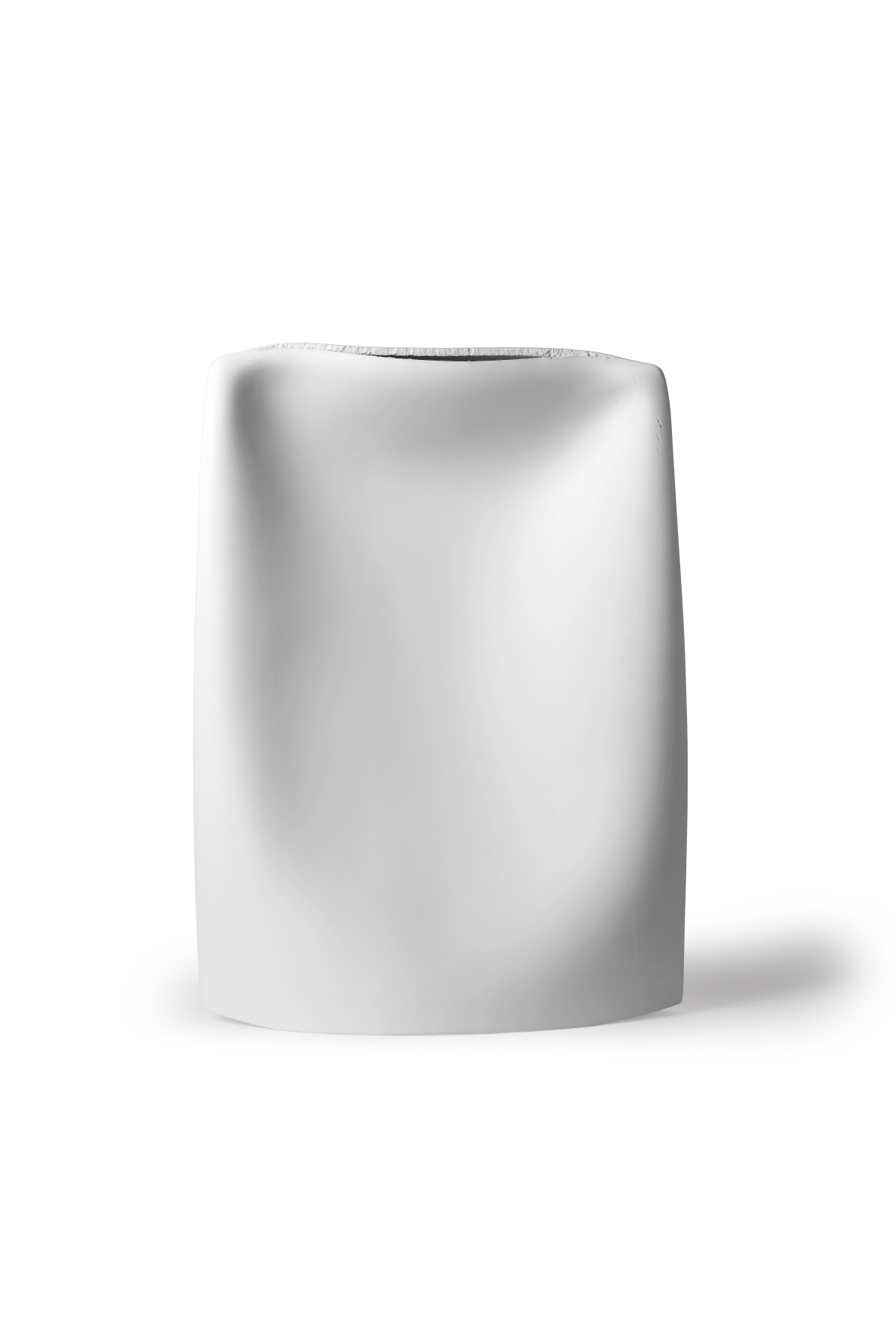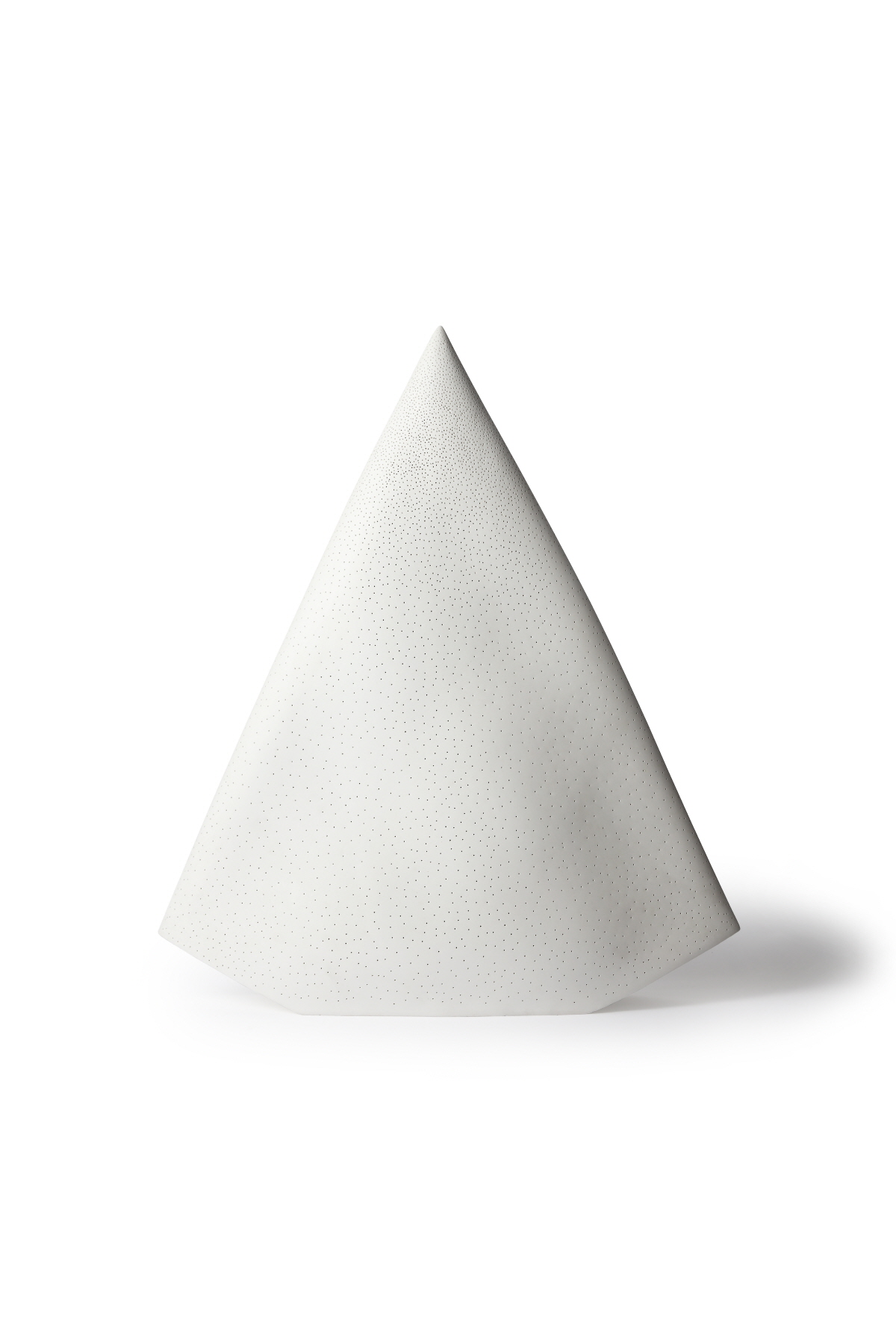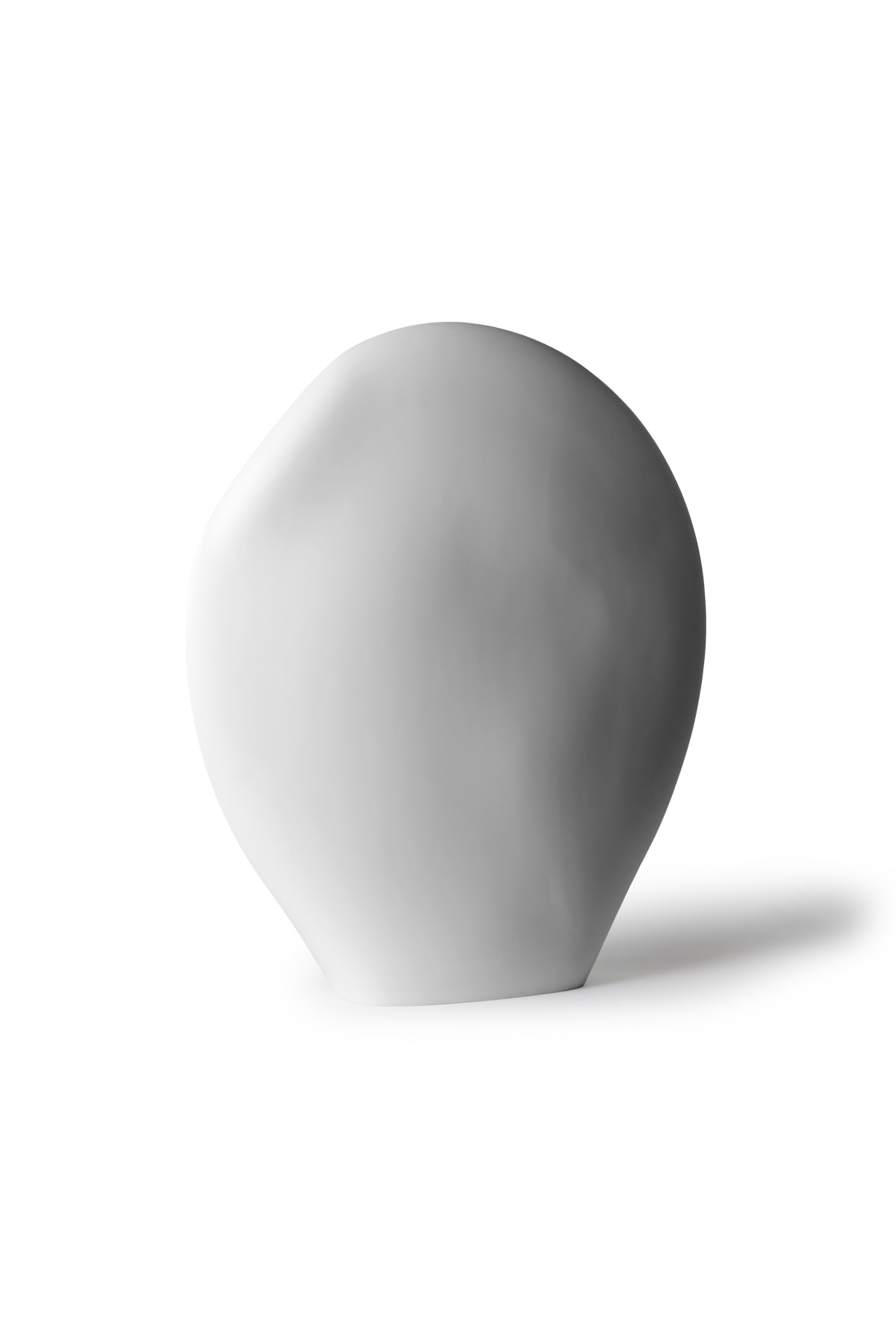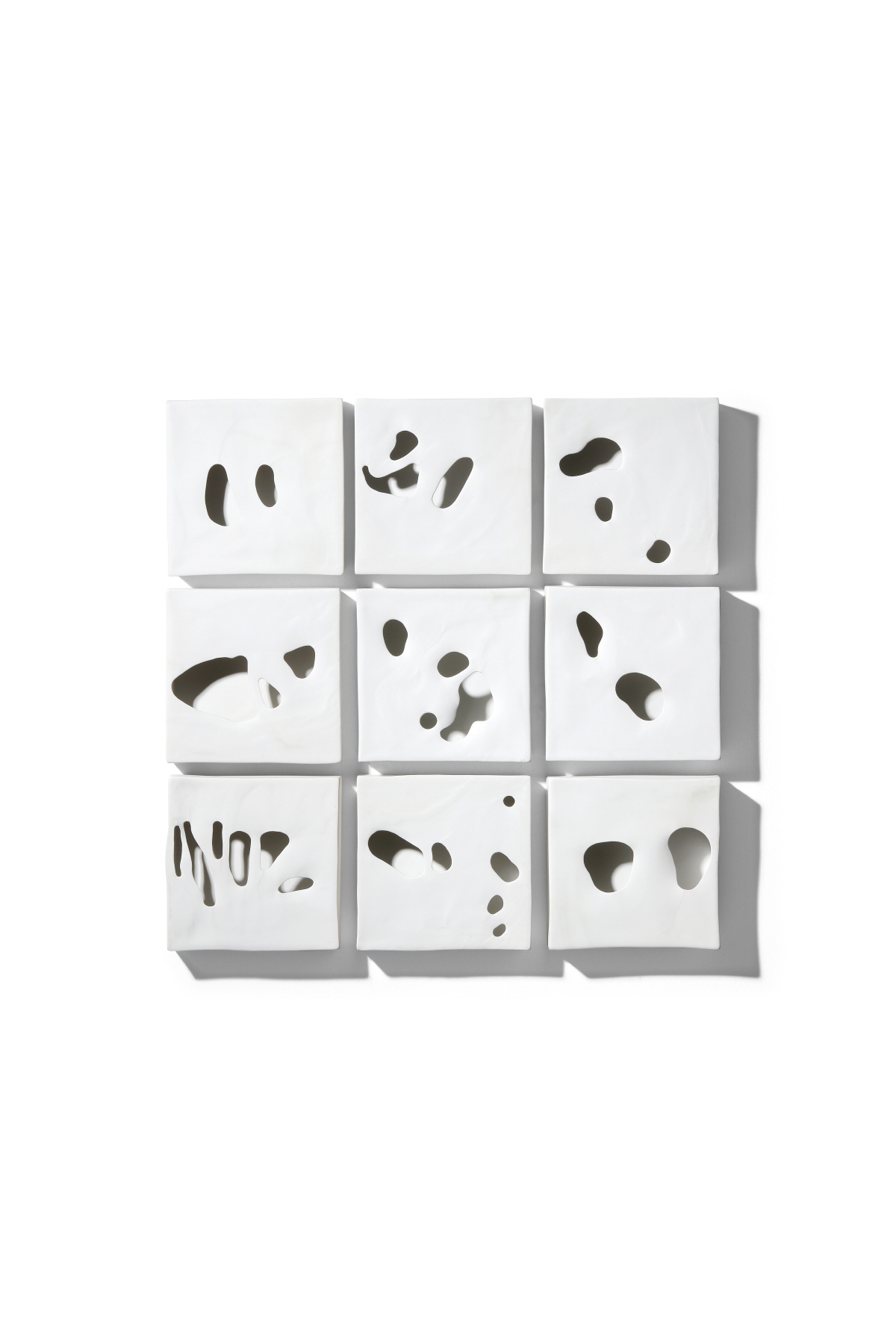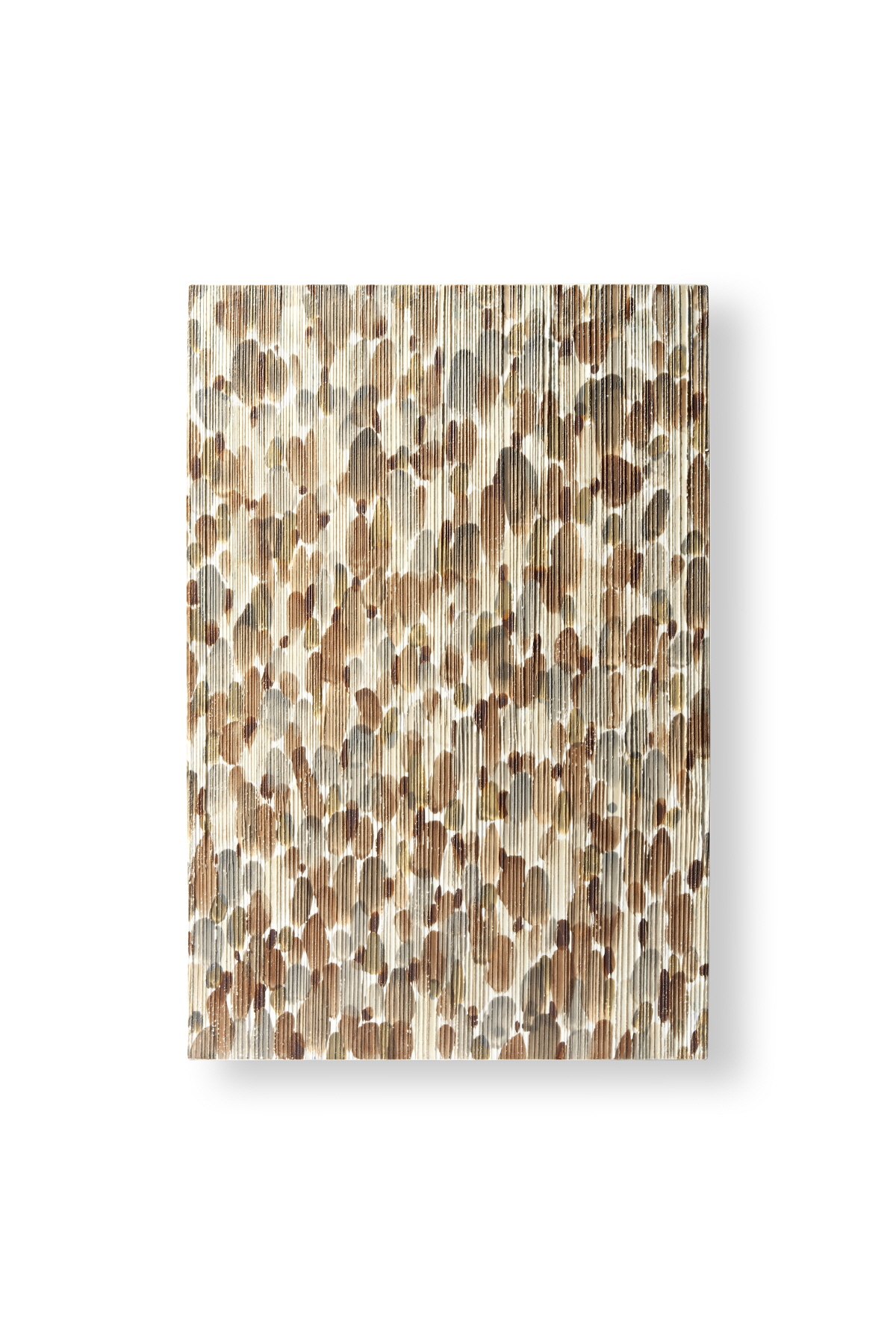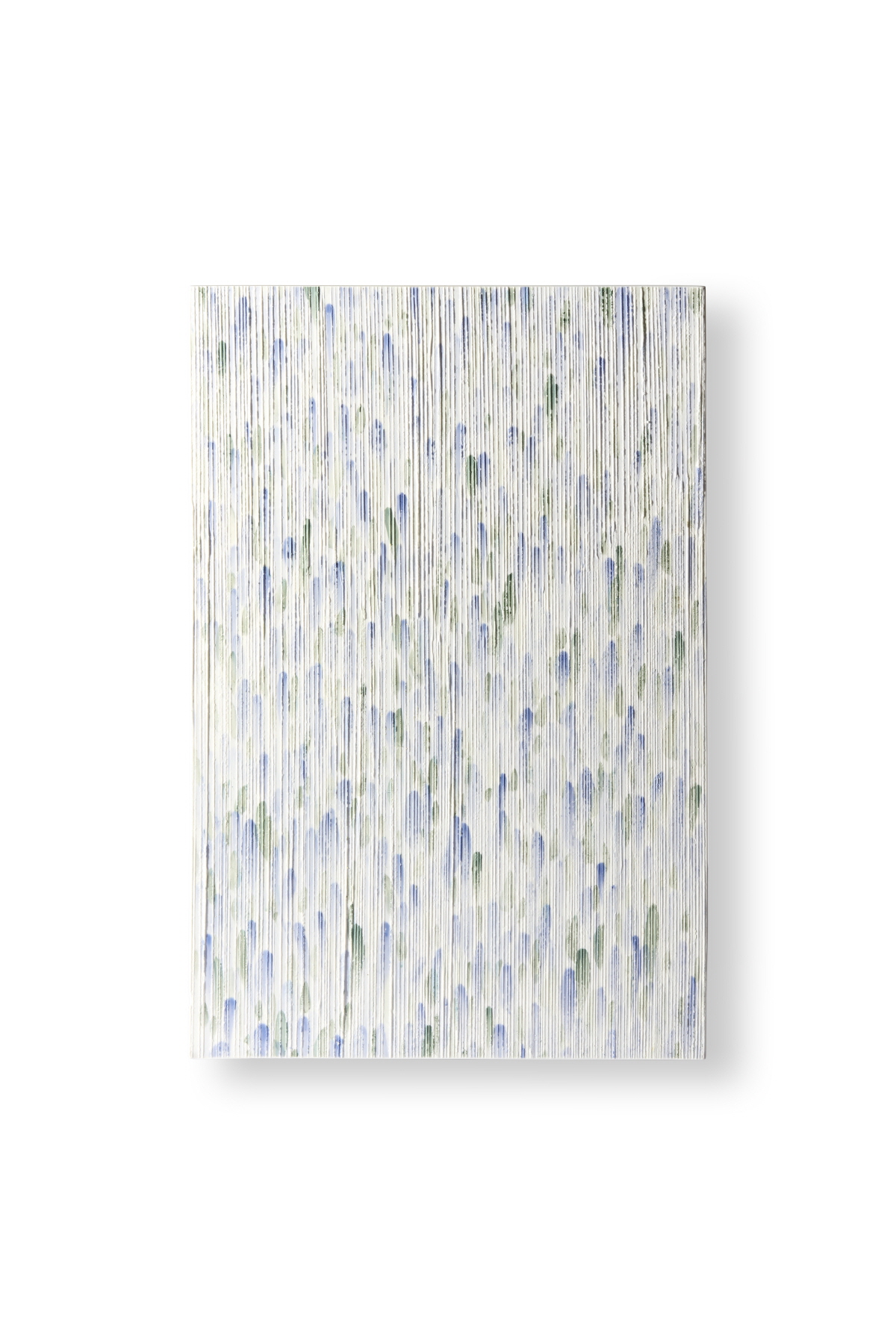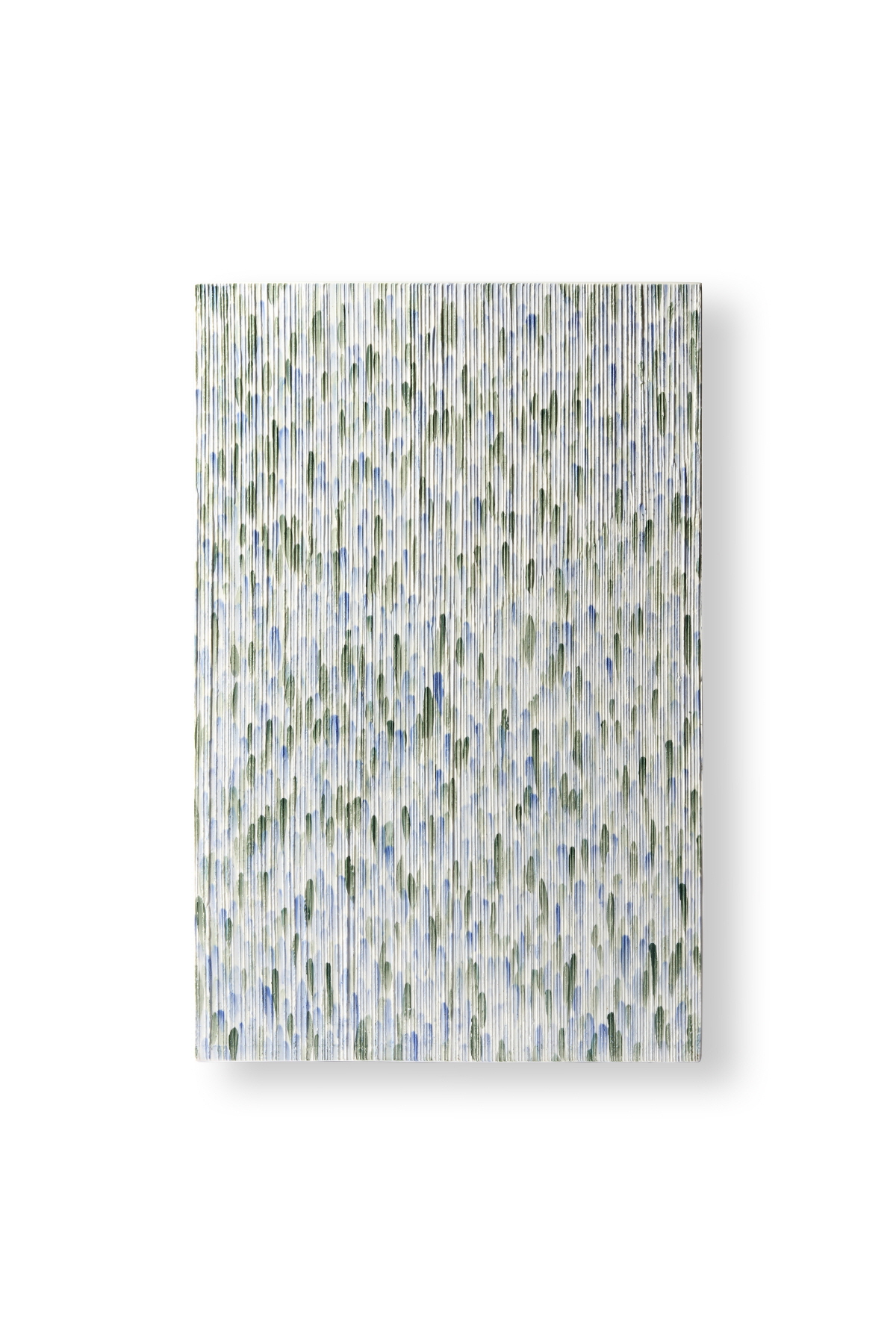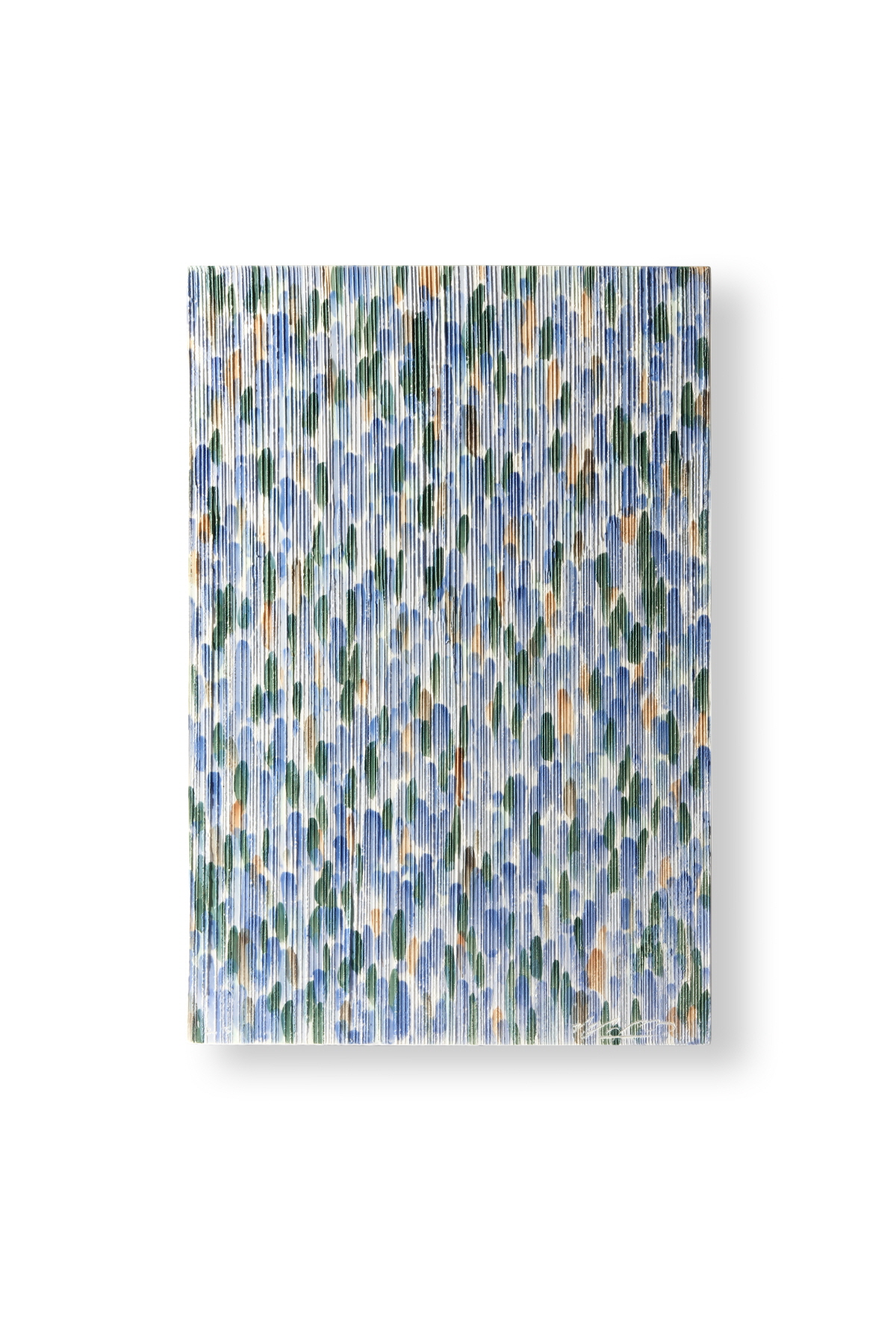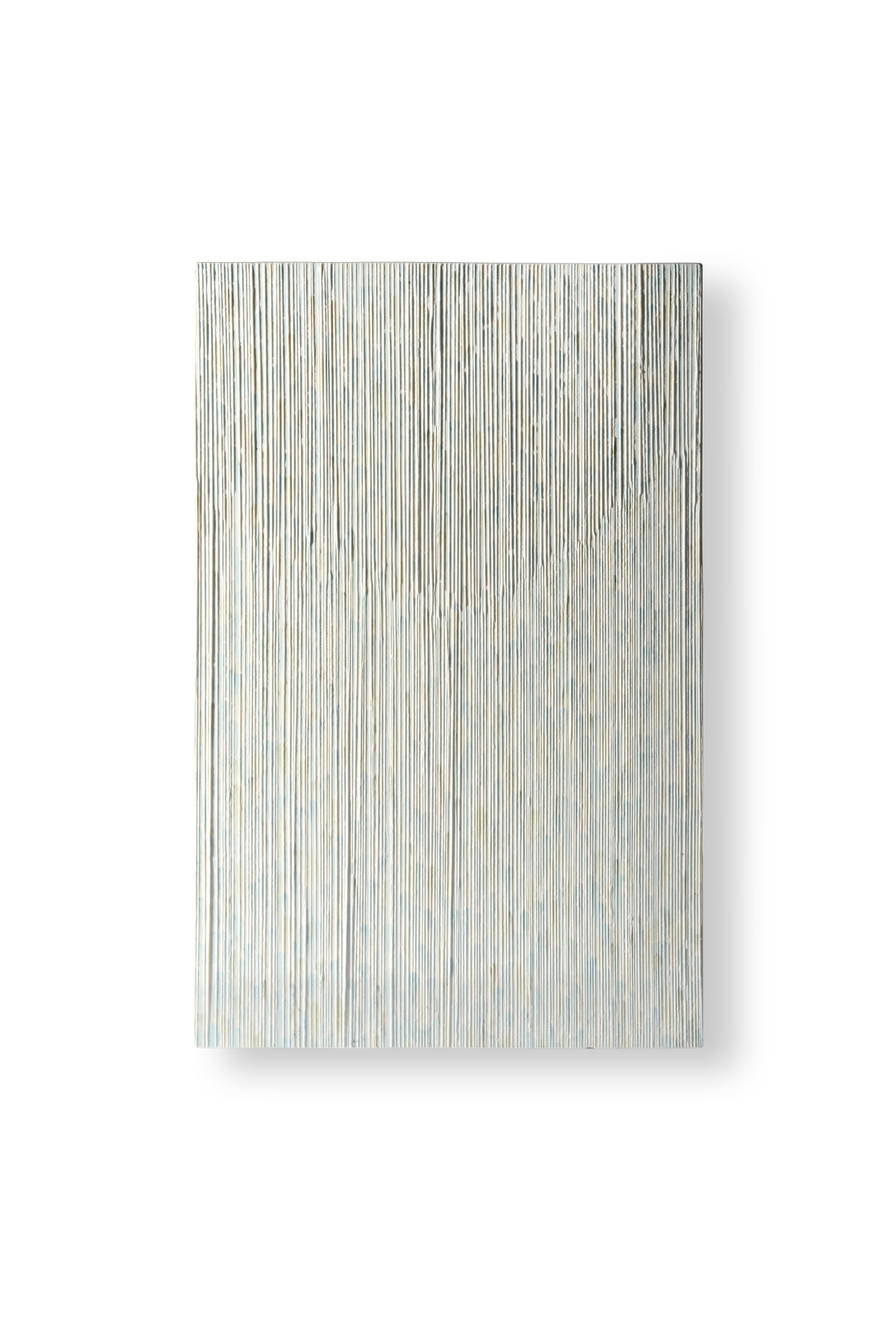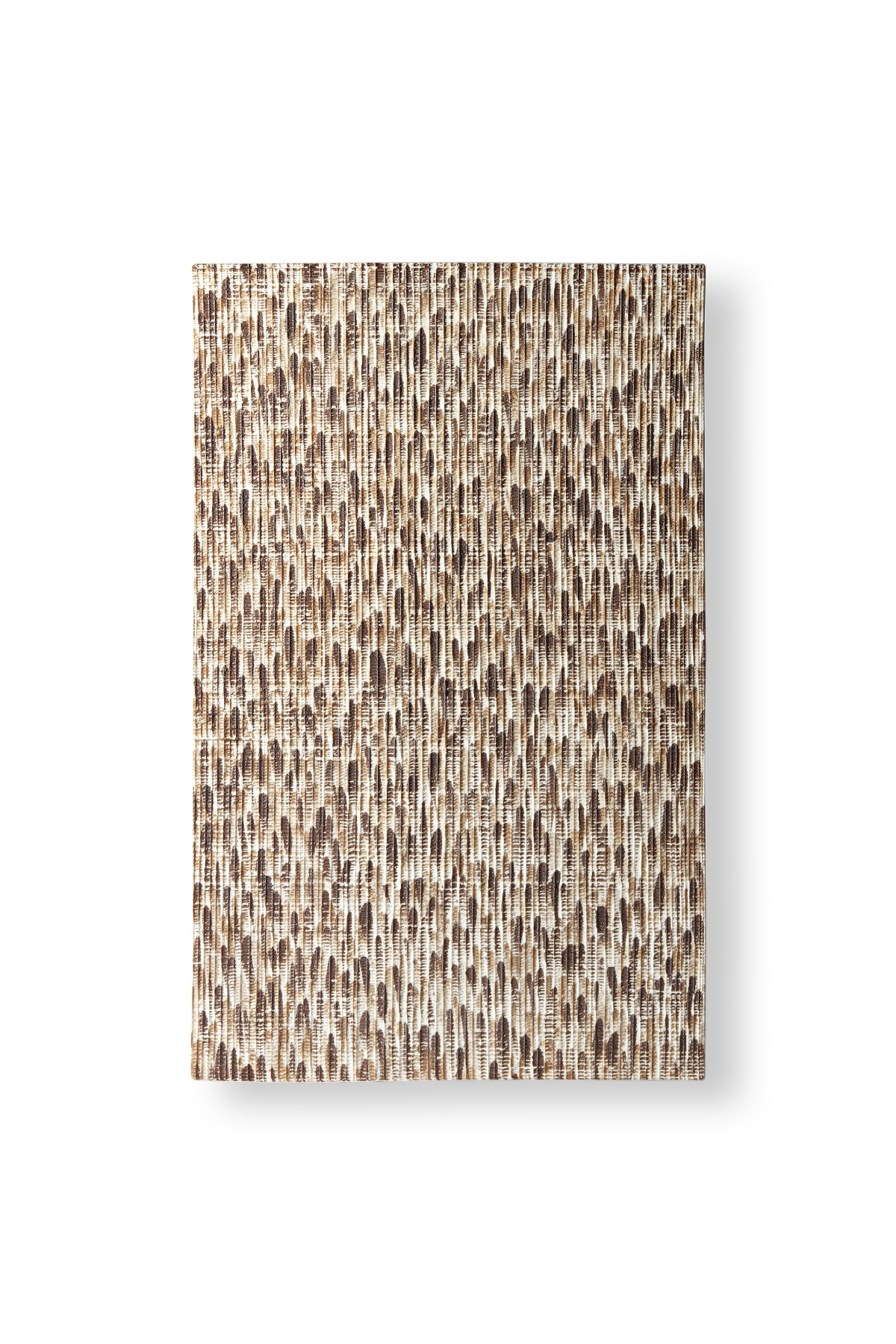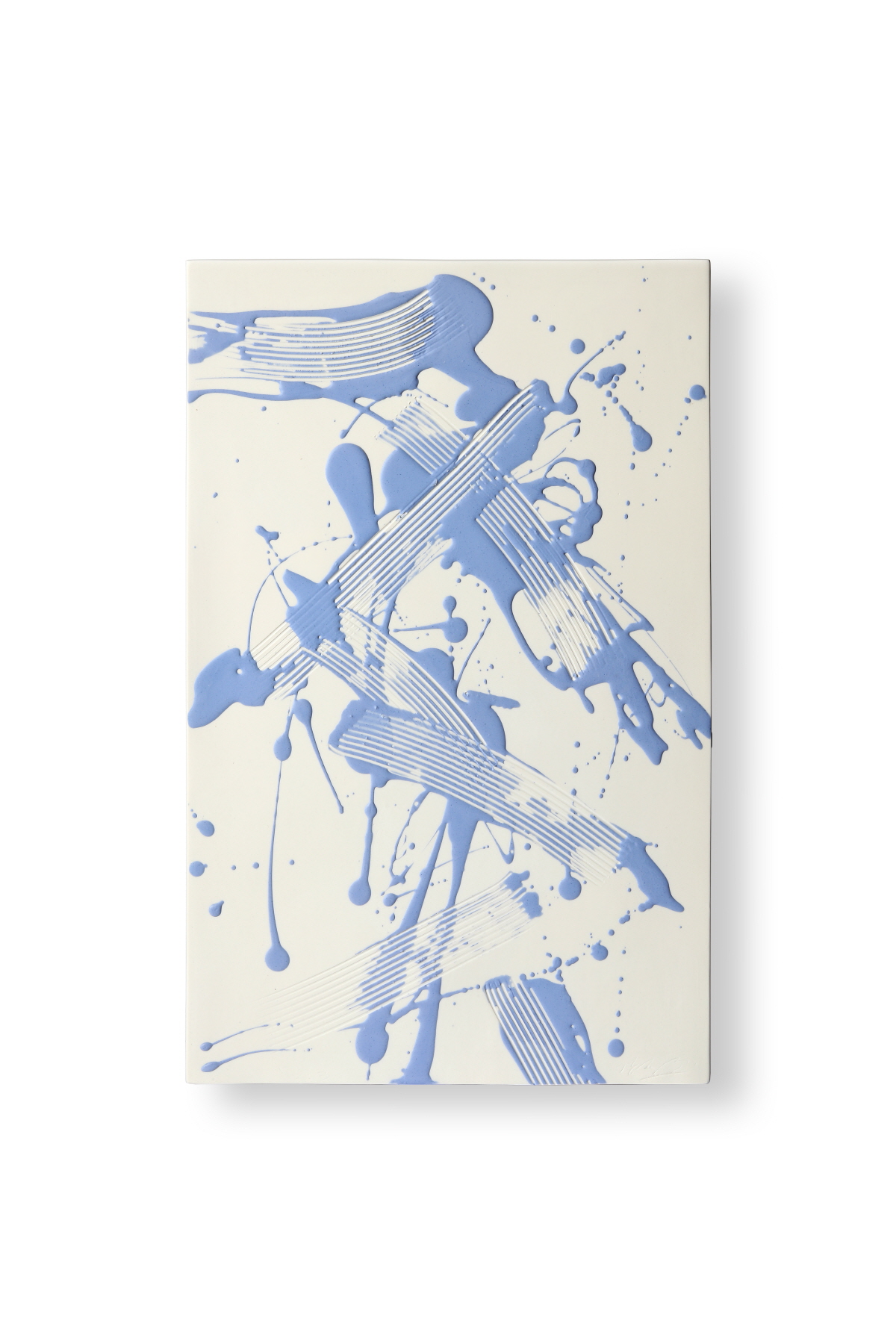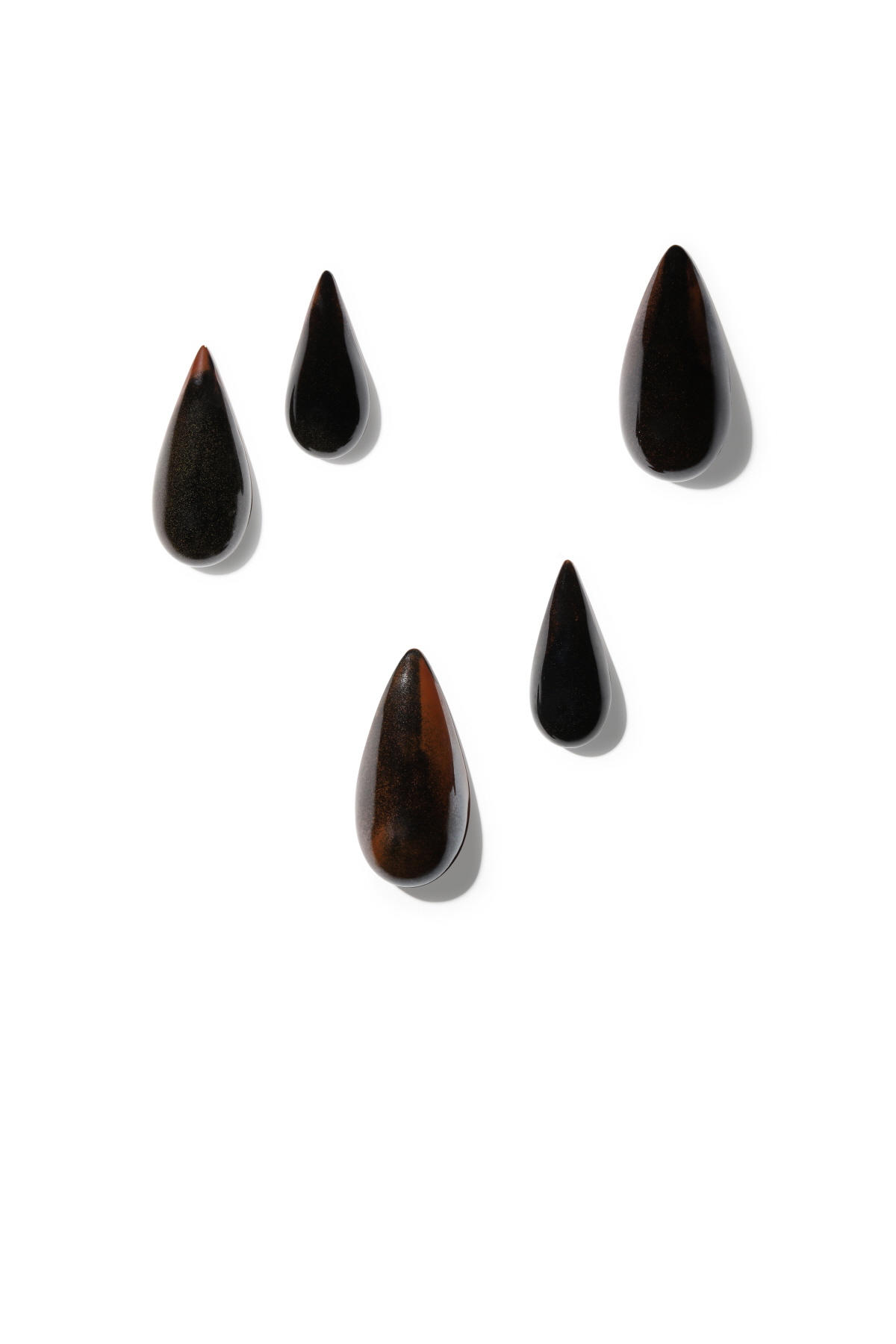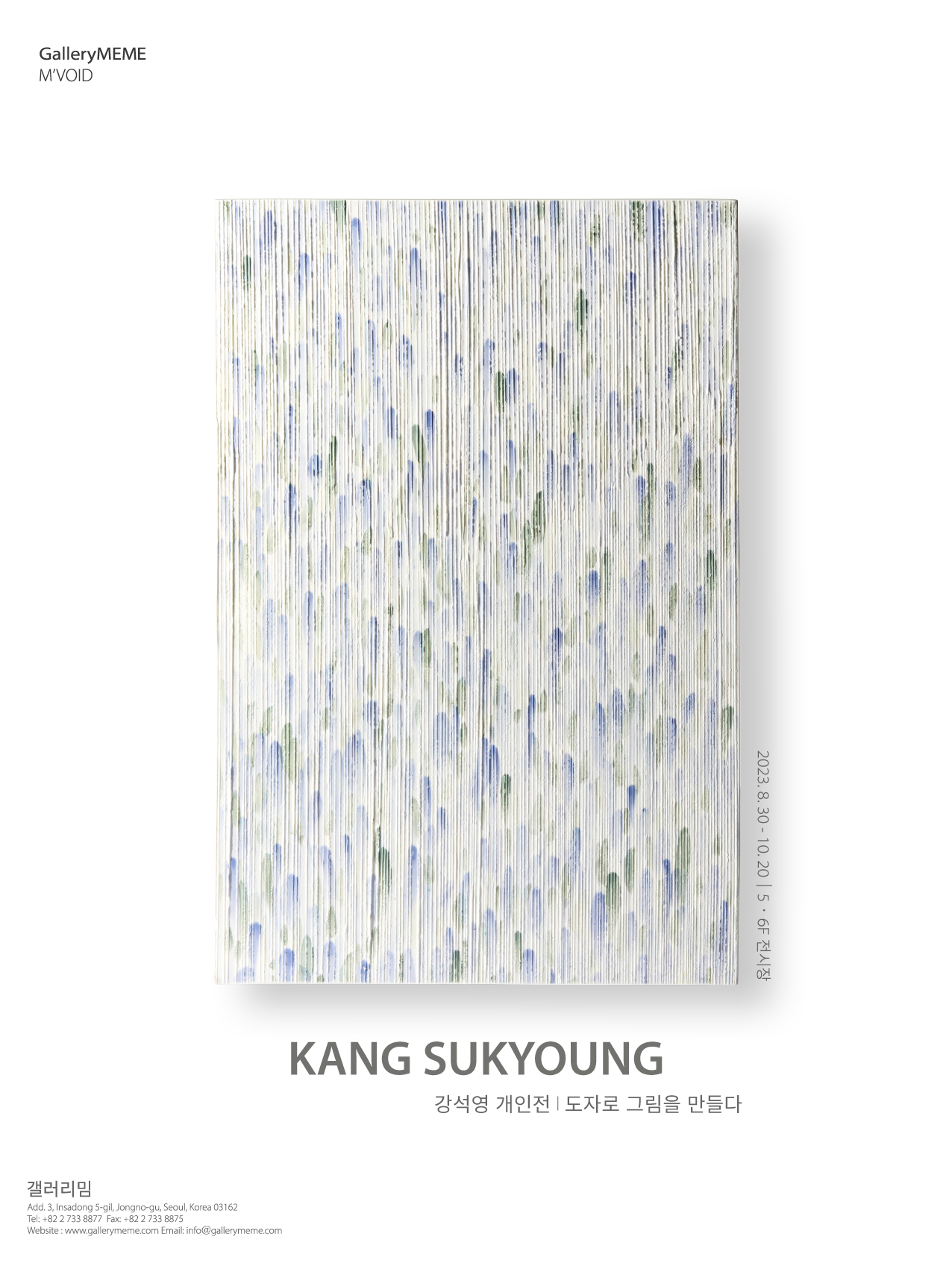강석영
M’VOID is a program that plans and presents exhibitions of leading artists at home and abroad who question contemporary aesthetic values while strengthening their works with insights.
ABOUT
1949년 서울 출생. 홍익대학교 및 동 대학원에서 도예를 전공하고, 프랑스 파리의 École Nationale Supérieure des Arts Appliqués et des Métiers d'Art를 졸업했다. 30여 년간 이화여자대학교 조형예술대학 학장 및 도예연구소 소장을 역임하며 연구와 후학 양성에 힘썼다. 완벽한 조형미에 인위적인 변형 요소들을 개입시키고, 점토 자체가 갖는 본연의 질감을 그대로 살려내기 위한 끊임없는 실험으로, 독창적인 추상도자 세계를 구축함과 동시에 ‘한국적인 백색의 아름다움’을 구현해 냈다는 평가를 받는다. 2003년부터 그리스 아테네 ‘국제 도예 올림픽 공원’에 세계적인 작가들의 작품과 함께 영구소장 전시되고 있고, 국립현대미술관 등 국내 유수의 기관과 영국 로얄 알버트 뮤지엄, 미국 브루클린 뮤지엄 등 해외 주요 미술관에 작품이 소장되어 있다. 서울 공예 박물관 외관에 4000개의 백자, 청자, 분청사기 도자편으로 제작된 <무제>가 영구 설치되어 있다.
강렬하고 섬세한 몸짓으로 그려낸 도자회화
캐스팅 기법을 사용한 동시대적 감각의 백자로 추상도자의 세계를 구축해 온 강석영의 작업은 조형원리에 충실한 형태를 만들고 물리적 충격을 가해 우연적 효과를 가미함으로써 인위적인 자연성을 추구한다. 하얀 백토를 고온에서 소결시켜 발현되는 순도 높은 백색과 유약을 사용하지 않은 표면은 작품의 간결함과 감각적 요소를 더하며 태토 자체에서 배어 나오는 은은한 광택은 부드러운 흙의 감촉을 전달한다. 이번 전시에서는 작가 특유의 미니멀하면서도 감각적인 입체작업과 더불어 회화성이 돋보이는 평면작업을 주로 선보인다.
추상화 같기도, 산수화 같기도 하고 인상파의 작품이나 올오버 페인팅이 연상되기도 하는 강석영의 신작은 석고 틀을 이용하여 도자로 만든 판이다. 1300도의 높은 온도에서도 휘지 않게 종이와 같이 평평한 도자 판을 만드는 작업은, 그것도 캐스팅 기법으로 만들기는 쉽지 않다. 성형뿐만 아니라 건조과정과 소성과정에서의 변형을 치밀하게 계산하고 예측해야 하기 때문이다. 여기서 작가가 오랫동안 천착해왔던 재료와 기법에 대한 끊임없는 실험과 탐구가 드러난다. 하얀색 도자판 위에 안료를 섞은 흙물을 커다란 붓질로 표현한 작업에서는 운동감, 속도감과 함께 작업과정에서의 신체의 괘적을 감지할 수 있다. 도판 표면 위에 덧입혀진 흙물의 두께감은 획을 긋기 위해 작가가 행한 순간의 격렬한 제스처를 그대로 전해준다.
이번 전시에서의 두드러진 변화는 백토 본연의 순수한 백색미를 추구하던 기존 작업과 달리 적극적으로 색을 사용했다는 데 있다. 화면 전체를 모노톤의 색으로 뒤덮은 일련의 작업들은 일반적으로 생각하듯이 도자 표면 위에 그림을 그린 것이 아니다. 석고판 표면에 뾰족한 도구로 선을 그어 요철을 만들고, 안료를 섞은 흙물을 동양화 붓으로 하나하나 농담을 달리하여 마치 점을 찍듯 화면을 채운 후, 그 위에 흙물을 부어 도자판을 만든 작업이다. 화면 전체에 텍스처가 세밀히 새겨져 있고, 작품의 표면 위에 색이 얹혀진 것이 아닌 도자판 내부에 색이 새겨져 있는 것이다. 이러한 제작방식으로 인해 화면을 가득 채운 붓 자국은 관람자가 보는 각도에 따라 그리고 빛에 따라 변화하며 깊이감을 선사한다. 어떤 작업은 표면의 텍스처와 색이 씨실과 날실처럼 직조되어 시각적이면서도 촉각적인 경험을 불러일으킨다. 서양미술에서 재현의 도구로 창을 사용하였듯이 하나하나의 화면에는 작가 작업실의 큰 창에서 보이는 철 따라 변하는 계절이 담겨있다. 녹음이 푸르른 여름날, 고운 단풍이 물든 가을 아침, 눈 내린 한겨울 창밖, 비 내리는 어느 봄날의 풍경을 각각의 화면은 한 폭의 동양화처럼 담아낸다. 변화하는 시간의 흐름이 전면추상회화 형식으로 표현된 작업들은 한땀 한땀 숨을 고르며 새겨 만든 산수화 같다.
완성된 형태에 인위적으로 힘을 가해 우연의 효과를 의도한 기존의 입체작업에서 작가의 행위와 몸짓을 엿볼 수 있듯이, 순간의 강렬한 붓질과 더불어 하나하나 숨을 고르며 속도와 강약을 조절한 붓질에서도 작가의 섬세한 움직임을 볼 수 있다. 작가 자신이 온몸으로 마치 씨름선수와 같이 작업한다고 표현하였듯이, 강석영의 작업은 제작과정에의 작가의 수행적 태도를 드러낸다. 결국 강석영의 작품이 공유하는 감각적이고도 미니멀한 조형언어는 재료와 기법에 대한 작가의 자세와 치열하고도 섬세한 제작공정에서 비롯된 것임을 알 수 있다. 공예적 요소와 회화적 요소, 서구적 형식과 동양적 미감이 중첩되는 강석영의 신작은 공예가로서의 역할을 다하면서 공예의 지평을 확장하려는 작가의 의지를 담고 있다.
김지혜 (이화여자대학교 미술대학 교수)
Ceramic Painting Composed of Powerful and Delicate Gestures
Kang Sukyoung has been constructing a world of abstract ceramics through his iconic slip casted white porcelain with a contemporary tone. The artist exerts a physical impact on the porcelain form which remains faithful to the formative principles. Such an impact, in turn, adds a random effect to the form which signifies his pursuit of artificial naturality. The pure white color achieved from sintering white clay in high temperatures and the un-glazed surface of the porcelain adds brevity and sensibility to the works, while the subtle gloss from the clay conveys the soft texture of the soil. The present exhibition mainly showcases his iconic minimal yet sensuous three-dimensional works and two-dimensional works that represent him as a painter.
His newest endeavor – that reminds us of abstract painting, landscape painting, impressionist, or all-over painting – rests on a ceramic plate made from a plaster mold. A process that involves crafting a thin flat ceramic plate at a high temperature of 1,300 degrees is not an easy task, particularly considering his predilection for casting techniques. The difficulty arises from the need to precisely calculate and predict the transformations of the form of the plate in all stages of forming, firing, and drying. It is precisely here that we witness the artist’s life-long devotion to ceaseless experiments and explorations of the material and technique of pottery. By tracing the process of his works – taking big strokes with a mixture of muddy water and pigment on the white ceramic plate – we experience a sense of motility and velocity as well as the trajectory of the artist’s body during such a process. The thick texture of the muddy water on the plate conveys the energetic gesture of the artist in the moment of striking the brush.
One striking difference that the present exhibition has from his previous shows is that he employed various colors as opposed to his former obsession with white from white clay. The series of works that exhibits a coverage of monotone colors on a ceramic plate is brought to us, in fact, not by painting, but by etching the surface with a sharp tool followed by strokes of pigmented muddy water that fill the plate with different shading, and a final pouring of muddy water on to the plate. As a result, a sensitive eye could see different textures on the plate and eventually understand how colors are not on the surface but on the inside of the plate. Such a process lets the viewer taste the depth of the works on multiple levels depending on their perspective or light. Some of the works have their textures and colors woven like warp and weft that give both visual and tactile satisfaction. As Western painters used the motif of the window as a tool of representation, each plate captures the essence of the changing seasons that the artist sees through the window in his studio. A green summer day, an autumn morning with leaves turning red, snow-white winter, and a gray, rainy spring day are all captured and represented like an oriental painting. The works that show the seasonal changes in total abstraction stand tall like a landscape painting with meticulous planning of the strokes.
As much as we see the actions and gestures of the artist in his original three-dimensional works where he intends a random effect by artificially giving force to a complete form, we see a sensitive and delicate movement of the artist in his strokes where he indulges in powerful ebullitions and/or where he controls his tempo and energy. As the artist himself argued – that his works are physically demanding as he uses the entirety of his body like a wrestler – Kang Sukyoung’s works reveal his performative approach to art, especially in the production process. Eventually, we learn that Kang Sukyoung’s sensuous yet minimal formative language derives from his restless studies of material and technique and the fierce yet delicate production process. His newest works show elements of both craft and painting and overlap both Western form and Eastern aesthetics. Such a coexistence must be interpreted as his will to creatively broaden the horizon of craft while remaining faithful to the role of a craftsperson.
Jihye Kim (Professor of Art, Ewha Women’s University)

